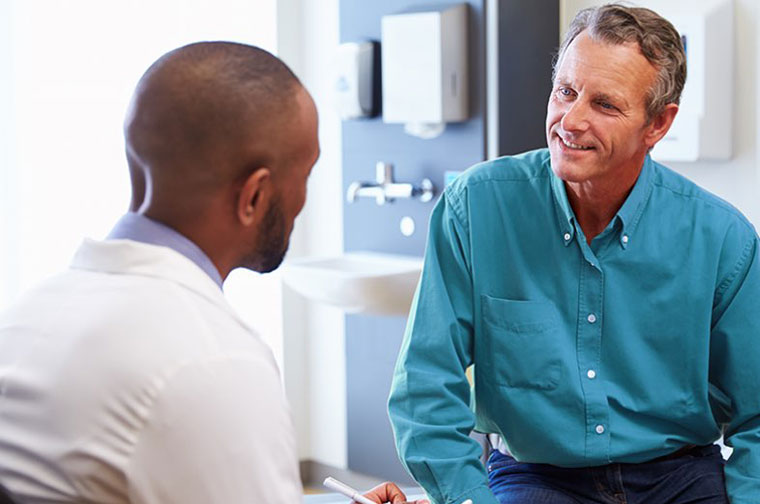Male Urology - Urinary Tract Infections (UTI) (Male Version)
Trust Us for Treatment of Urinary Tract Infections
It’s important to seek quality treatment at the first sign of a Urinary Tract Infection (UTI), and Minnesota Urology providers are experts in treating UTI’s. With a dedicated team of urologists, Minnesota Urology provides quality care at all our Minnesota locations.
Find A Physician
About UTI or Urinary Tract Infection
A urinary tract infection occurs when microorganisms invade the urinary tract and overcome the body’s natural defenses causing Infection. Normally, bacteria that enter the urinary tract are rapidly removed by the body but sometimes bacteria overcome the body’s natural defenses and cause infection.
-
What is the urinary tract?
The urinary tract is the body’s drainage system for removing wastes and extra water. The urinary tract includes two kidneys, two ureters, a bladder, and a urethra. The kidneys are a pair of bean-shaped organs, each about the size of a fist and located below the ribs, one on each side of the spine, toward the middle of the back. Every minute, a person’s kidneys filter about 3 ounces of blood, removing wastes and extra water. The wastes and extra water make up the 1 to 2 quarts of urine a person produces each day. The urine travels from the kidneys down two narrow tubes called the ureters. The urine is then stored in a balloon like organ called the bladder and emptied through the urethra, a tube at the bottom of the bladder.
When the bladder empties, a muscle called the sphincter relaxes and urine flows out of the body through the urethra. The opening of the urethra is at the end of the penis in males.
-
What causes UTIs?
Most urinary tract infections are caused by bacteria that live in the bowel. The bacterium Escherichia coli (E. coli) causes the vast majority of UTIs. Microbes called chlamydia and mycoplasma can infect the urethra and reproductive system but not the bladder. chlamydia and mycoplasma infections may be sexually transmitted and require treatment of sexual partners, as well
The urinary tract has several systems to prevent infection. The points where the ureters attach to the bladder act like one-way valves to prevent urine from backing up toward the kidneys, and urination washes microbes out of the body. In men, the prostate gland produces secretions that slow bacterial growth. In both sexes, immune defenses also prevent infection. But despite these safeguards, infections may still occur. Certain bacteria have a strong ability to attach themselves to the lining of the urinary tract.
-
How common are UTIs in adults?
Urinary tract infections are the second most common type of infection in the body, accounting for about 8.1 million visits to health care providers each year. Women are especially prone to UTIs for anatomical reasons. One factor is that a woman’s urethra is shorter, enabling bacteria quicker access to the bladder. Also, a woman’s urethral opening is near sources of bacteria from the anus and vagina. For women, the lifetime risk of having a UTI is greater than 50 percent. UTIs in men are not as common as in women but can be serious when they occur.
-
Who is at risk for a UTI?
Although everyone has some risk, some people are more prone to getting UTIs than others. People with spinal cord injuries or other nerve damage around the bladder have difficulty emptying their bladder completely, enabling bacteria to grow in the urine that stays in the bladder. Anyone with an abnormality of the urinary tract that obstructs the flow of urine—a kidney stone or enlarged prostate, for example—is at risk for a UTI. People with diabetes or problems with the body’s natural defense system are more likely to get UTIs.
Sexual activity can move microbes from the bowel or vaginal cavity to the urethral opening. If these microbes have special characteristics that allow them to live in the urinary tract, it is harder for the body to remove them quickly enough to prevent infection.
Another common source of infection is catheters, or tubes, placed in the urethra and bladder. Catheters interfere with the body’s ability to clear microbes from the urinary tract. Bacteria travel through or around the catheter and establish a place where they can thrive within the bladder. A person who cannot urinate in the normal way or who is unconscious or critically ill often needs a catheter for more than a few days. The Infectious Diseases Society of America recommends using catheters for the shortest time possible to reduce the risk of a UTI.
-
Are UTIs recurrent?
Men are less likely than women to have a first UTI. But once a man has a UTI, he is likely to have another because bacteria can hide deep inside prostate tissue. Anyone who has diabetes or a problem that makes it hard to urinate may have repeat infections.
-
Are UTIs serious?
Most UTIs are not serious, but some infections can lead to serious problems, such as kidney infections. This is why it is important to see a urologist who is specially trained to treat this condition. Chronic kidney infections—infections that recur or last a long time—can cause permanent damage, including kidney scars, poor kidney function, high blood pressure, and other problems. Some acute kidney infections—infections that develop suddenly—can be life threatening, especially if the bacteria enter the bloodstream, a condition called septicemia.
-
What are the signs and symptoms of a UTI?
Symptoms of a UTI vary by age, gender, and whether a catheter is present. Urinary tract infection symptoms typically include a frequent and intense urge to urinate and a painful, burning feeling in the bladder or urethra during urination. The amount of urine may be very small. Older men are more likely to be tired, shaky, and weak and have muscle aches and abdominal pain. Urine may look cloudy, dark, or bloody or have a foul smell. In a person with a catheter, the only symptom may be fever that cannot be attributed to any other cause. Normally, UTIs do not cause fever if they are in the bladder. A fever may mean the infection has reached the kidneys or has penetrated the prostate. Other symptoms of a kidney infection include pain in the back or side below the ribs, nausea, and vomiting.
-
How are UTIs diagnosed?
To find out whether a person has a UTI, our urologists will ask about urinary symptoms and then test a sample of urine for the presence of bacteria and white blood cells, which are produced by the body to fight infection. If a person has recurrent UTIs, the urologist may order some additional tests to determine if the person’s urinary tract is normal.
There are also many more advanced testing options for UTIs including:
Kidney and bladder ultrasound. Ultrasound uses a device, called a transducer that bounces safe, painless sound waves off organs to create an image of their structure. The procedure is performed by a specially trained technician, and the images are interpreted by a radiologist—a doctor who specializes in medical imaging. Anesthesia is not needed. The images can show abnormalities in the kidneys and bladder. However, this test cannot reveal all important urinary abnormalities or measure how well the kidneys work.
Voiding cystourethrogram. This test is an X-ray image of the bladder and urethra taken while the bladder is full and during urination, also called voiding. As the person lies on the X-ray table, a health care provider inserts the tip of a thin, flexible tube called a catheter through the urethra into the bladder. The bladder and urethra are filled with a special dye called contrast medium, to make the structures clearly visible on the X-ray images. The X-rays are taken from various angles while the bladder is full of contrast medium. The catheter is then removed and X-ray images are taken during urination. The procedure is performed in a health care provider’s office, outpatient center, or hospital by an X-ray technician. The technician is supervised by a radiologist while the images are taken. The radiologist then interprets the images. Anesthesia is not needed, but light sedation may be used for some people. This test can show abnormalities of the inside of the urethra and bladder. The test can also determine whether the flow of urine is normal when the bladder empties.
Computerized tomography (CT) scan. CT scans use a combination of X-rays and computer technology to create three-dimensional (3-D) images. A CT scan may include the injection of contrast medium. CT scans require the person to lie on a table that slides into a tunnel-shaped device where the X-rays are taken. The procedure is performed in an outpatient center or hospital by an X-ray technician, and the images are interpreted by a radiologist; anesthesia is not needed. CT scans can provide clearer, more detailed images to help the health care provider understand the problem.
Urodynamics. Urodynamic testing is any procedure that looks at how well the bladder, sphincters, and urethra are storing and releasing urine. Most urodynamic tests focus on the bladder’s ability to hold urine and empty steadily and completely. Urodynamic tests can also show whether the bladder is having abnormal contractions that cause leakage.
Cystoscopy. Cystoscopy is a procedure that uses a tube-like instrument to look inside the urethra and bladder. Cystoscopy may be used to look for swelling, redness, and other signs of infection.
-
How can recurrent UTIs be prevented?
Changing some daily habits may help a person prevent recurrent UTIs.
Eating, Diet, and Nutrition
Drinking lots of fluid can help flush bacteria from the system. Water is best. Most people should try for six to eight, 8-ounce glasses a day. A person who has kidney failure should not drink this much fluid. A health care provider should be consulted to learn how much fluid is healthy.
Urination Habits
A person should urinate often and when the urge arises. Bacteria can grow when urine stays in the bladder too long. Drinking a glass of water will also help flush bacteria away.




